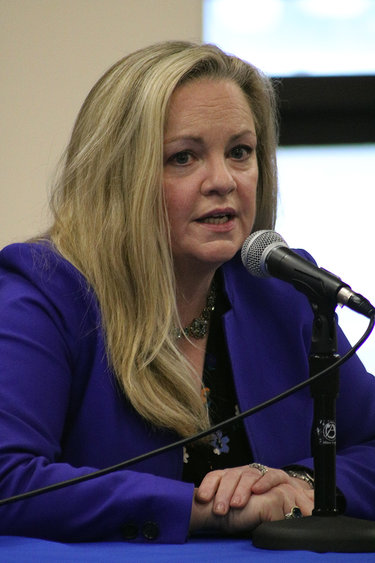Limited data may indicate COVID-19 is more widespread
ALBANY COUNTY — The county’s death toll from COVID-19 now stands at 12 since a man in his 50s died Thursday night, according to County Executive Daniel McCoy. Like the other 11 patients who died, he had underlying medical conditions, McCoy said.
He was the youngest yet to succumb to the coronavirus in Albany County; the others had all been over 60.
“I say to the younger people out there … someone in their fifties. This affects everyone,” said McCoy at Friday morning’s press briefing.
The county now has 397 confirmed cases of coronavirus disease 2019. On Friday morning, 520 people were under mandatory quarantine and 75 were under precautionary quarantine.
Thirty-eight county residents are currently hospitalized with 14 of them in intensive-care units. The county’s hospitalization rate of those who tested positive for the virus stands at 9.5 percent.
After a two-week hiatus, community testing began again on Monday at the University at Albany campus where the state set up a drive-through facility, housed in tents. Because of high winds, testing was temporarily suspended on Friday morning, according to Albany County’s health commissioner, Elizabeth Whalen, but she expects it will resume again soon.
The site serves the entire Capital Region. On Thursday, 229 Albany County residents were tested, Whalen said, noting this is a “significant increase” over the 70 to 85 daily tests administered earlier at local hospitals.
Test results can take a couple of days to be returned and Whalen noted there has been an uptick in confirmed cases because of the testing.
Altogether, about 4,400 Albany County residents have been tested for COVID-19, Whalen said. The county has about 310,000 residents.
With the new testing initiative, the percent of tested county residents having the disease has gone from 7.5 percent to 8.2 percent, Whalen said.
“We expect that to trend up,” she said, explaining, “Now more like 10 percent of people tested per day are becoming positive so this does indicate — it’s a very limited data set — but it may indicate the spread in the community is wider than we previously understood, which is what we thought the testing would show up.”
Asked about deaths from influenza, Whalen said there have been fewer because people are staying home. She also said there was a protocol for doing a post-mortem test for COVID-19 and those results have been negative so far.
Whalen also said, “We’re hearing some cautious optimism from downstate about a slight letup in hospitalizations and cases. While that is somewhat reassuring, I again want to assert that our trend may be very different than New York City. We may expect our apex to come a little bit later.”
Even when the apex is reached, Whalen stressed, protocols — handwashing, staying home, keeping six feet from others — must still be followed. Social distancing, she said, is “blunting the curve.”
With Easter weekend, Whalen acknowledged that a lot of families want to get together. Her own family, she said, usually has a large gathering but this year is considering videoconferencing to share Easter dinner, protecting her elderly parents.
“I think there have been many cautionary tales across the country of people that thought: I feel fine. I’m going to get together with my family … As a result, people have died,” said Whalen.
She stressed that a person who has COVID-19 can be completely asymptomatic and “spread this disease with deadly consequences.”
The state’s health department issued an advisory on April 8 that says, “Recent studies have shown that a significant portion of individuals infected with the virus are asymptomatic. Asymptomatic individuals, even if they eventually develop symptoms, can transmit the virus to others before showing symptoms.”
Typical symptoms involve a fever and cough.
Because of this new evidence, the state now supports “members of the public who choose to wear cloth face coverings in public settings, where social distancing measures are difficult to maintain (e.g., grocery stores and pharmacies), especially in areas of significant community transmission.”
The advisory also says that people wearing masks should not become complacent about other protocols, like handwashing and distancing. The department advises that masks should fit snugly and cover the nose and mouth, and be changed frequently and laundered when they are soiled or wet.
Finally, the advisory says, “Surgical masks and N-95 respirators are critical supplies that must continue to be reserved for healthcare workers and other first responders.”
Whalen urged people to stay in touch with their relatives through phone or computer or by gathering on social media and concluded, “Please stay home this weekend. Please do not gather with anyone that you do not already live with.”



